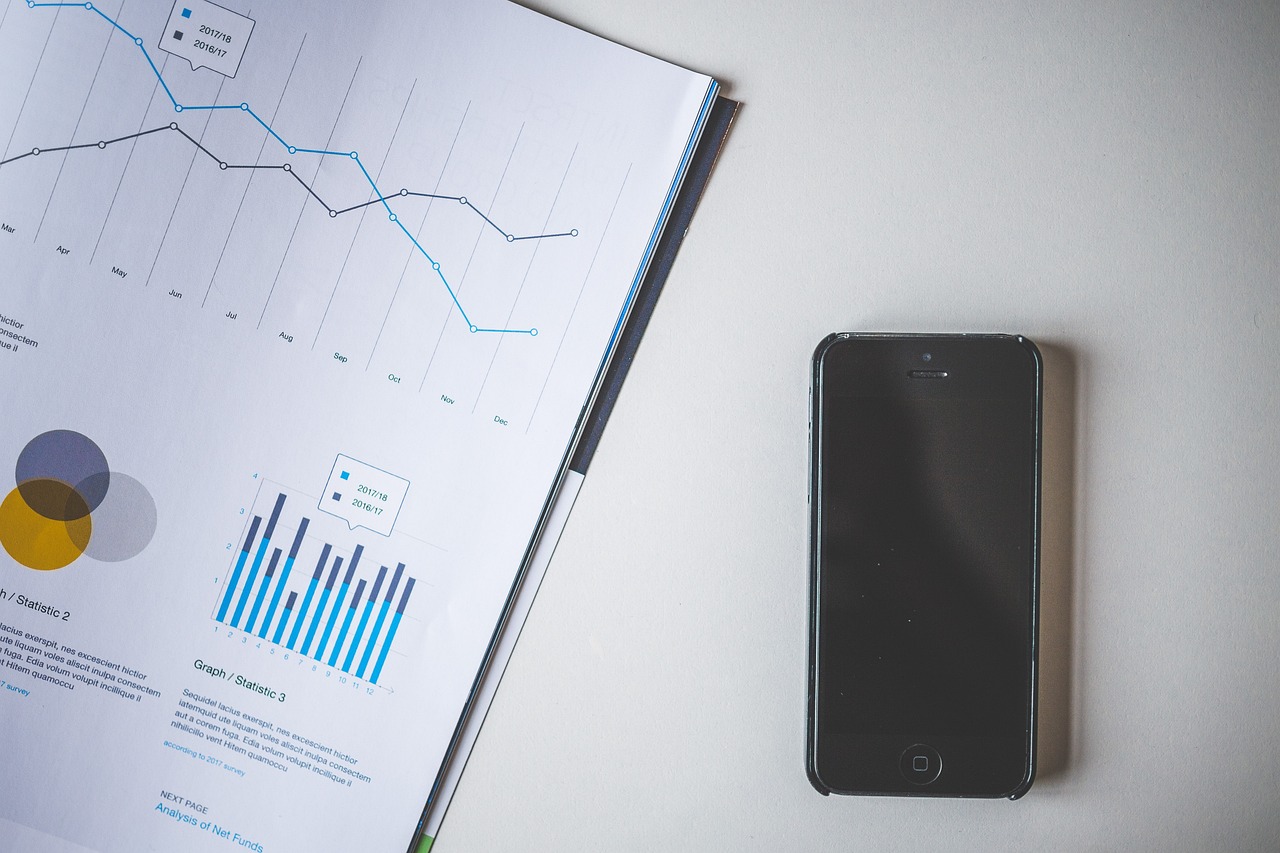How To Use Data Analytics for Better Time Management
Are you struggling to manage your time effectively? Do you find yourself overwhelmed with tasks and deadlines? It's time to revolutionize your approach to time management with the power of data analytics. By harnessing data analytics tools and techniques, you can unlock a whole new level of productivity, efficiency, and decision-making prowess in both your personal and professional life.

Understanding Data Analytics
Understanding data analytics is crucial in today's fast-paced world where information overload is a common challenge. Data analytics involves the process of collecting, organizing, analyzing, and interpreting data to extract valuable insights and make informed decisions. By understanding data analytics, individuals can harness the power of data to improve their time management skills, increase productivity, and achieve their goals effectively.
At the core of data analytics is the ability to transform raw data into actionable information. This process includes data collection from various sources such as time tracking tools, calendars, and productivity apps. Once the data is collected, it is analyzed using statistical techniques and visualization tools to identify patterns, trends, and correlations that can provide valuable insights into how time is being utilized.
Understanding data analytics also involves interpreting the results of the analysis to make informed decisions. By examining the data, individuals can gain a deeper understanding of their time management habits, identify areas for improvement, and make strategic adjustments to optimize their schedules and prioritize tasks effectively.
Moreover, data analytics can help individuals set realistic and achievable goals by providing quantitative measurements of their progress. By tracking key performance indicators related to time management, individuals can evaluate their performance, measure their efficiency, and make data-driven decisions to enhance their productivity.
In essence, understanding data analytics is about leveraging the power of data to gain valuable insights into how time is being spent, identify inefficiencies, and make informed decisions to improve time management skills. By utilizing data analytics tools and techniques, individuals can take control of their time, increase their productivity, and achieve their personal and professional goals more effectively.

Setting Clear Goals and Objectives
Setting clear goals and objectives is a fundamental step in effective time management. By utilizing data analytics, individuals can establish specific, measurable, achievable, relevant, and time-bound (SMART) goals that serve as guiding principles for their daily tasks and activities. These goals act as a roadmap, providing a clear direction and focus, ultimately enhancing productivity and efficiency.
When setting goals and objectives, it is essential to consider both short-term and long-term aspirations. Data analytics can assist in breaking down larger objectives into smaller, actionable steps, making them more manageable and attainable. By analyzing past performance data and trends, individuals can set realistic goals that align with their capabilities and resources.
Moreover, data analytics tools enable individuals to track progress towards their goals in real-time, providing valuable insights into their performance and highlighting areas that require attention. By regularly monitoring key performance indicators (KPIs) related to their objectives, individuals can make informed decisions and adjustments to stay on track and achieve desired outcomes.
Setting clear goals and objectives not only improves time management but also enhances motivation and accountability. When individuals have a clear understanding of what they aim to accomplish and why it matters, they are more likely to stay focused, dedicated, and proactive in their pursuit of success.

Tracking and Analyzing Time Usage
This article explores the benefits of utilizing data analytics tools and techniques to improve time management skills, increase productivity, and make informed decisions in personal and professional settings.
When it comes to managing time effectively, tracking and analyzing how time is spent on various tasks and activities can provide valuable insights. By using data analytics tools, individuals can gain a deeper understanding of their time usage patterns and identify areas for improvement.
Imagine having a detailed breakdown of how each hour of your day is spent - from work tasks to leisure activities. With data analytics, you can track and categorize your time usage to uncover inefficiencies and time-wasting habits that may be hindering your productivity.
One effective way to track time usage is by using time tracking apps or software that automatically log your activities throughout the day. These tools can generate reports and visual representations of your time allocation, allowing you to see where your time is being invested and where adjustments can be made.
By analyzing this data, you can pinpoint tasks that consume a disproportionate amount of time, identify time management bottlenecks, and prioritize activities based on their importance and impact. This insight enables you to make informed decisions on how to optimize your schedule for maximum efficiency.
Moreover, tracking and analyzing time usage with data analytics can help you establish realistic time estimates for tasks, set achievable deadlines, and allocate time effectively to meet your goals. It empowers you to take control of your time and make strategic adjustments to enhance your overall time management practices.
Ultimately, by harnessing the power of data analytics to track and analyze your time usage, you can transform how you approach time management, leading to improved productivity, better decision-making, and a more balanced work-life integration.

Identifying Time Management Patterns
When it comes to managing time effectively, one key aspect that often gets overlooked is the ability to identify time management patterns. By utilizing data analytics tools and techniques, individuals can uncover valuable insights into their habits and behaviors when it comes to managing time.
Imagine being able to see a visual representation of how you allocate your time throughout the day. Data analytics can help you identify patterns such as peak productivity hours, recurring distractions, or tasks that consistently take longer than expected. By recognizing these patterns, you can make informed decisions on how to optimize your schedule for better time management.
Furthermore, data analytics can reveal trends in your time management habits over time. You may discover that certain days of the week are more productive for you, or that specific tasks always seem to get pushed to the bottom of your to-do list. Armed with this information, you can adjust your time management strategies to capitalize on your strengths and address areas of improvement.
Additionally, by analyzing your time management patterns, you can identify inefficiencies in your workflow. Perhaps you spend too much time on low-priority tasks or switch between tasks too frequently, leading to decreased productivity. Data analytics can highlight these pain points and help you streamline your processes for optimal efficiency.
In essence, identifying time management patterns through data analytics is like having a personal time management coach that provides valuable insights and recommendations based on your unique habits and behaviors. By leveraging these patterns, you can take control of your time, boost productivity, and achieve your goals more effectively.

Utilizing Time Management Apps and Software
Utilizing time management apps and software can significantly enhance productivity and efficiency in both personal and professional settings. These tools offer a wide range of features designed to help individuals better manage their time, prioritize tasks, and track progress. By integrating data analytics capabilities, time management apps and software provide valuable insights that enable users to make informed decisions and optimize their workflows.
One key benefit of using time management apps is the ability to streamline workflows by centralizing tasks, deadlines, and priorities in one easily accessible platform. This not only helps in organizing daily activities but also ensures that important deadlines are not missed. Additionally, many time management apps offer features such as reminders, notifications, and calendar integrations to help users stay on track and meet their goals.
Moreover, time management apps with data analytics functionalities allow users to track their time usage and identify patterns in their productivity levels. By analyzing this data, individuals can pinpoint inefficiencies, such as time-wasting activities or distractions, and make necessary adjustments to improve their time management practices. This data-driven approach enables users to focus on high-priority tasks and allocate their time more effectively.
Furthermore, some time management apps offer advanced reporting and analytics tools that provide detailed insights into how time is spent on different tasks and projects. This information can be invaluable in identifying areas for improvement, setting realistic goals, and measuring progress over time. By leveraging these analytics features, individuals can make data-driven decisions that lead to better time management outcomes.
In conclusion, utilizing time management apps and software with data analytics capabilities can revolutionize the way individuals manage their time and boost their overall productivity. By harnessing the power of data insights, users can optimize their schedules, prioritize tasks efficiently, and achieve their goals with greater ease. Incorporating these tools into daily routines can lead to significant improvements in time management skills and ultimately contribute to a more balanced and fulfilling life.

Implementing Data-Driven Time Management Strategies
Data-driven time management strategies are essential for individuals looking to optimize their productivity and efficiency. By leveraging data insights, individuals can tailor their time management approaches to suit their unique work styles and preferences. One effective strategy is to first identify key performance indicators (KPIs) related to time management, such as task completion rates or time spent on specific activities. By tracking and analyzing these KPIs using data analytics tools, individuals can gain valuable insights into their time usage patterns and areas for improvement.
Moreover, data-driven time management strategies involve setting specific goals and objectives based on data analysis. By establishing SMART goals that are measurable and time-bound, individuals can create a roadmap for achieving optimal time management outcomes. This approach ensures that time is allocated efficiently towards tasks that align with overarching objectives, leading to increased productivity and effectiveness.
Additionally, implementing data-driven time management strategies requires the integration of technology and tools that facilitate data collection and analysis. Time management apps and software equipped with data analytics features can help individuals track their progress, identify bottlenecks in their workflows, and make informed decisions to enhance their time management practices. These tools provide real-time feedback and actionable insights that enable individuals to make data-driven adjustments for better time management results.
Furthermore, data-driven time management strategies emphasize the importance of continuous improvement and adaptation. By regularly evaluating time management performance metrics and adjusting strategies based on data analysis, individuals can refine their workflows, prioritize tasks effectively, and optimize their productivity levels. This iterative approach ensures that time management practices remain dynamic and responsive to changing priorities and demands.

Measuring and Evaluating Time Management Performance
Measuring and evaluating time management performance is crucial for assessing the effectiveness of your strategies and making informed decisions for improvement. By utilizing data analytics tools, you can gather valuable insights into how you are utilizing your time and identify areas where adjustments can be made to enhance productivity.
One effective way to measure time management performance is by tracking key performance indicators (KPIs) related to time usage. These KPIs may include metrics such as time spent on specific tasks, completion rates, and overall productivity levels. By analyzing these data points, you can gain a comprehensive understanding of your time management habits and identify areas for optimization.
Additionally, evaluating time management performance involves comparing actual results with set goals and objectives. By measuring your progress against predefined targets, you can determine whether your current strategies are effective or if adjustments need to be made. Data analytics can provide valuable insights into areas where you may be falling short and help you make data-driven decisions to improve your time management practices.
Furthermore, data analytics can help you identify patterns and trends in your time management behavior. By analyzing historical data, you can uncover recurring patterns in how you allocate your time and identify opportunities for improvement. Understanding these patterns can enable you to make informed decisions about how to prioritize tasks, allocate resources efficiently, and optimize your daily schedule for maximum productivity.

Continuous Improvement and Adaptation
This article explores the benefits of utilizing data analytics tools and techniques to improve time management skills, increase productivity, and make informed decisions in personal and professional settings.
Continuous improvement is like sculpting a masterpiece; it requires patience, dedication, and a keen eye for detail. In the realm of time management, adapting to changing circumstances is crucial for staying ahead of the curve. Data analytics serves as the chisel, shaping your strategies with precision and insight.
Imagine your time management approach as a garden that needs constant tending. By analyzing data on how you allocate your time, you can identify weeds of inefficiency and nurture the flowers of productivity. This iterative process of refinement is the essence of continuous improvement.
Through data-driven insights, you can pinpoint areas where your time management practices fall short and make targeted adjustments. Just as a skilled craftsman hones their skills over time, you can refine your time management techniques to achieve peak efficiency.
Adaptation is the secret ingredient that keeps your time management strategies fresh and effective. As the landscape of your responsibilities shifts, being flexible and responsive is key to maintaining productivity. Data analytics empowers you to adapt on the fly, adjusting your approach based on real-time feedback.
Embracing continuous improvement and adaptation through data analytics is not a one-time task but a journey of growth and refinement. By leveraging the power of data, you can sculpt your time management practices into a masterpiece of efficiency and effectiveness.
Frequently Asked Questions
- What is data analytics and how can it improve time management?
Data analytics involves collecting, analyzing, and interpreting data to gain insights and make informed decisions. By using data analytics tools for time management, individuals can track their activities, identify inefficiencies, and prioritize tasks effectively.
- How can data analytics help in setting goals for better time management?
Data analytics can assist in setting SMART goals by providing data-driven insights into past performance and time usage. This helps individuals create specific, measurable, achievable, relevant, and time-bound objectives that enhance their time management strategies.
- What are some common time management apps that utilize data analytics?
Popular time management apps and software like Toggl, RescueTime, and Todoist integrate data analytics features to help users track their time, analyze productivity patterns, and optimize their workflows for improved efficiency.
- How can data analytics be used to measure time management performance?
Data analytics enables individuals to measure the effectiveness of their time management strategies by analyzing key performance indicators, identifying bottlenecks, and making data-driven adjustments to enhance productivity and achieve better results.
















